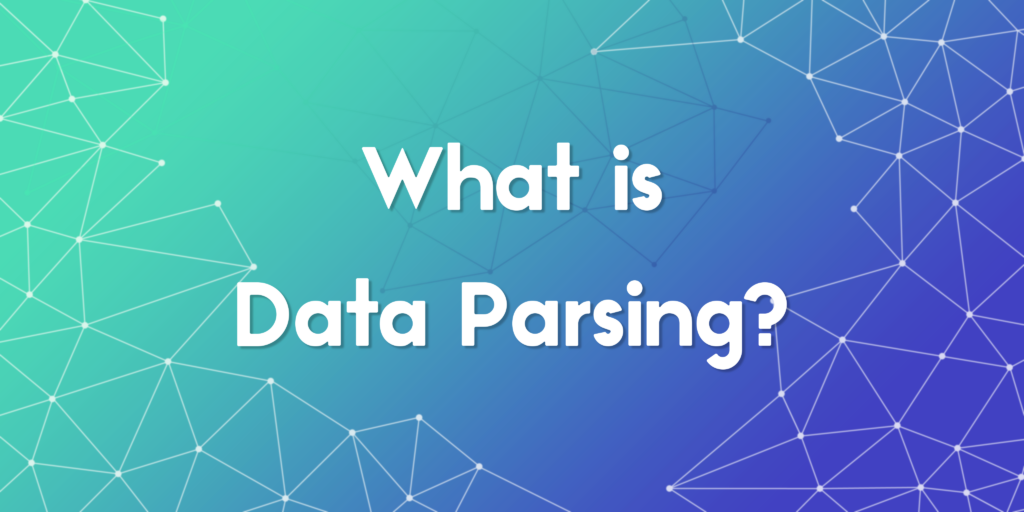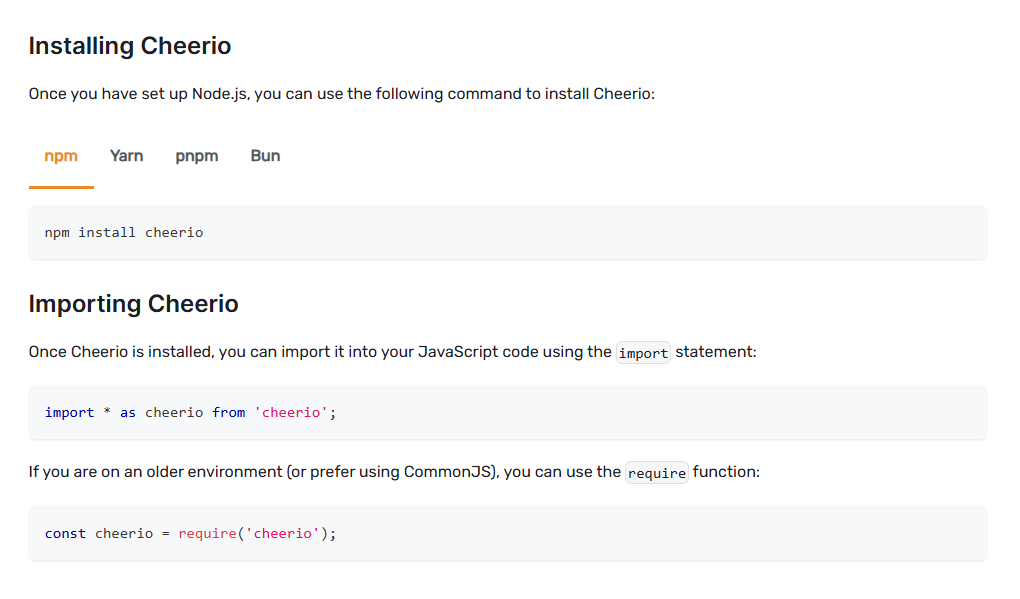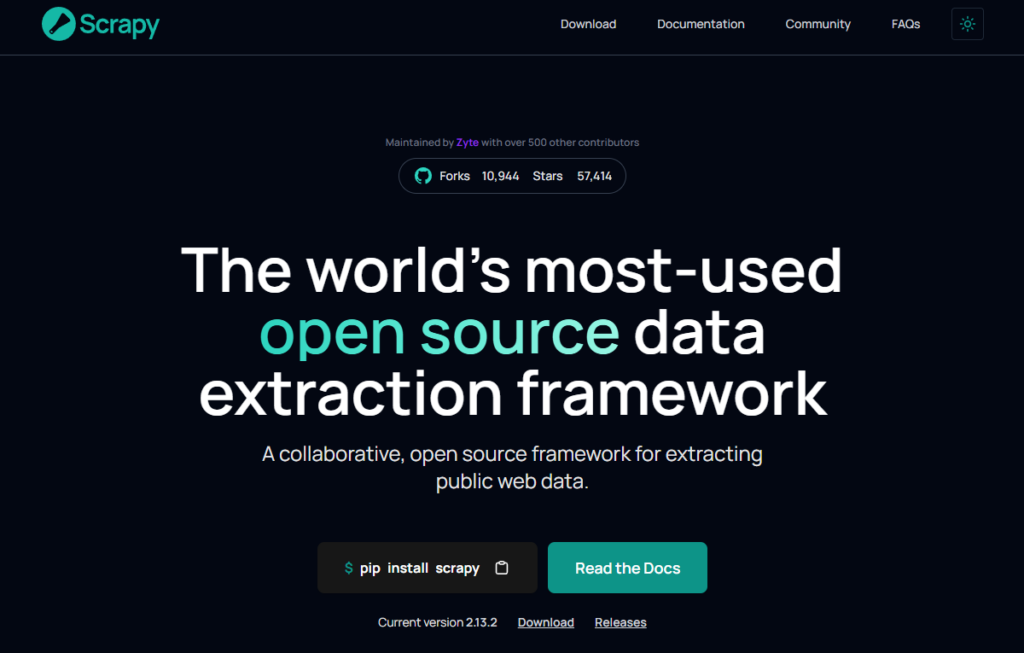What is Data Parsing? Top Tools & Techniques Explained

What is data parsing? As businesses and systems generate massive amounts of digital information every second, the need to process and understand that data quickly has never been more critical. Data parsing is the method of breaking down complex or unstructured data into a cleaner, structured format that software can easily analyze and utilize. It plays a central role in everything from automation scripts and web scraping tools to real-time analytics engines and backend services. This article dives into what data parsing really means, the techniques used to perform it, and the top tools for parsing data in modern workflows.
What is data parsing and why does it matter
At its core, data parsing refers to the process of breaking down data into smaller, more manageable parts so that it can be analyzed, stored, or manipulated more easily. This process is essential for turning unstructured or semi-structured data into a usable format.
For example, when scraping a website, the content may appear as messy HTML. A parser helps extract specific pieces like product titles, prices, or descriptions, turning them into structured data such as a table or JSON format. Similarly, in natural language processing, parsing is used to understand the grammatical structure of text.
In today’s digital ecosystem, everything from eCommerce product feeds to IoT device data depends on parsing. It enables seamless data migration, real-time monitoring, and AI-driven automation.
Building vs. Buying a Data Parsing Tool
Deciding whether to build or buy a parsing tool is a challenge that many organizations face:
Building Your Data Parser
Pros:
- Customization to specific needs.
- Complete control over the development.
- Cheaper, if used a lot.
Cons:
- High costs for design, development and server maintenance.
- Resource and time consumption by the internal development team.
- Potential for performance problems when budget is limited.
Buying a Data Parsing Tool
Pros:
- Less internal resource consumption and less time wasted by internal teams.
- Defined cost, and avoiding surprises.
- The maintenance, upgrades, and running of the tool are covered by the provider, and not by your team.
Cons:
- Limitations on satisfying very specific requests.
- No control over the tool.
- More expensive in the long run.
Common techniques in data parsing
There are multiple methods used to parse data, each suited for specific types of content and environments. Here are a few techniques often applied in the field of data parsing:
- Regular Expressions: Ideal for simple patterns such as extracting email addresses or dates. It is powerful but limited when dealing with nested or inconsistent data.
- DOM Parsing: Used mostly for parsing HTML and XML content, it leverages the Document Object Model to traverse and manipulate nodes.
- JSON Parsing: JSON data is commonly used in APIs and web applications. Built-in libraries in most programming languages make parsing JSON straightforward.
- CSV Parsing: Parsing comma-separated values is common in spreadsheet exports. Tools can split lines and columns for easy data import.
- Lexical Analysis: Used in compiler design and more complex parsing logic, this breaks input into tokens and feeds them to a parser for syntax analysis.
Each technique plays a key role depending on the complexity and type of data involved. Mastering them allows developers to efficiently manage vast datasets with varying formats.
Top tools to parsing data across different needs
Choosing the right tool makes data parsing more accurate and less time-consuming. Here are some top tools to parsing data, categorized by their strengths:
1️⃣ Beautiful Soup

This Python library is widely used for web scraping and HTML/XML parsing. It offers a simple interface for navigating tags and extracting information.
- Background: Created by Leonard Richardson, it’s been a go-to parser for Python users for over a decade.
- Key Features: Works well with poorly formed markup and integrates seamlessly with requests and lxml.
- What makes it unique: Its forgiving nature and human-readable API make it ideal for beginners.
2️⃣ Cheerio

Cheerio is a fast and flexible parsing tool for Node.js. It mimics jQuery syntax to handle HTML in a server-side environment.
- Background: Inspired by jQuery, it became popular in the Node.js community for its speed and simplicity.
- Key Features: Lightweight, fast parsing, and manipulation of markup.
- What makes it unique: Server-side jQuery-style syntax allows quick adaptation for those familiar with frontend development.
3️⃣ JQ
JQ is a command-line JSON parser that’s perfect for handling JSON data directly from terminal environments.
- Background: Developed for Unix-like systems, JQ is often used in data pipelines and system scripts.
- Key Features: Filters, maps, and transforms JSON data with powerful scripting capabilities.
- What makes it unique: Enables scripting complex logic in a concise, readable way directly in shell scripts.
4️⃣ Pandas
While primarily a data analysis library, Pandas has robust capabilities for parsing data from CSV, Excel, JSON, and SQL.
- Background: Developed by Wes McKinney in 2008 to fill the gap in high-performance data tools in Python.
- Key Features: DataFrame structure, handling missing data, reading multiple file types.
- What makes it unique: Combines parsing with powerful analytics in one place, ideal for exploratory analysis.
5️⃣ Scrapy

This Python framework is built for scalable web crawling and parsing.
- Background: Maintained by Zyte (formerly Scrapinghub), Scrapy is favored for large-scale web data projects.
- Key Features: Asynchronous scraping, data export pipelines, and middleware system.
- What makes it unique: Enterprise-ready with extensive plugin support and a focus on performance.
Comparing top parsing tools by key criteria
- Browser Support: Beautiful Soup and Scrapy operate independently of the browser, making them suitable for headless scraping. Cheerio is server-side only. Pandas and JQ are command-line or local-script based.
- Ecosystem: Scrapy and Pandas are part of larger ecosystems, enabling deeper integrations. Beautiful Soup pairs well with requests. Cheerio fits well in Node.js environments.
- Language Support: Beautiful Soup, Scrapy, and Pandas are Python-based. Cheerio is for JavaScript. JQ is language-agnostic through command line.
- Setup Complexity: Cheerio and JQ are lightweight. Scrapy requires more configuration. Pandas and Beautiful Soup fall in the middle range.
- Speed: JQ and Cheerio are fast due to their low overhead. Scrapy shines in concurrent requests. Pandas is optimized for batch operations.
- Community: All tools have active communities. Pandas and Beautiful Soup have more widespread adoption in academia and enterprise.
The Benefits of Data Parsing
Data parsing provides significant advantages for various tasks:
- Time and Cost Savings: Data parsing automates repetitive processes, saving time, money, and effort. The organized format of parsed data means less time is needed to decipher and utilize information effectively.
- Increased Data Flexibility: Once data is parsed into a human-friendly format, it can be reused for different operations and applications, optimizing resource utilization.
- High-Quality Data: Data parsing involves cleansing and standardizing data to ensure that only accurate data is used.
- Easier Integration: Data parsing helps convert data from different sources into a consistent format, easing data integration across systems and platforms. This aligns well with ProxyTee’s global coverage, allowing you to access data in a seamless and cohesive manner.
- Enhanced Data Analysis: With data structured correctly, analysis is simpler and more insightful, providing better results and supporting more strategic decision-making.
Challenges of Data Parsing
While data parsing is powerful, it can come with challenges:
- Error and Inconsistency Handling: Raw data may contain inconsistencies, syntax errors or special characters that a data parser must handle efficiently. For example, an HTML page could have unclosed tags that could lead to failed parse attempts. A smart parsing system must be able to resolve this.
- Managing Large Datasets: Data parsing of Big Data might have performance issues because it is a resource-intensive process. The way to solve this is using multiple parsing processes running in parallel. This method will require the availability of the required resources. ProxyTee provides the unlimited bandwidth needed to handle such issues, making your tasks easier to achieve.
- Support for Different Formats: With the ever-changing tech world, different data formats emerge very frequently, and a data parser should be able to process different formats efficiently, whether input, or output. Data parsers need to support different types of char encoding to handle data between platforms like Windows and Mac.
Practical applications that show the power of data parsing
Data parsing is a key enabler of modern workflows in tech, finance, marketing, and science. Marketers use it to collect price trends from eCommerce platforms. Financial analysts parse economic reports from PDFs or web pages. Developers build integrations between systems by parsing API responses. Even scientists rely on parsing to clean and organize sensor or experimental data before applying models.
For developers building automation scripts, knowing what is data parsing and how to apply the right technique ensures reliability and saves hours of manual work. For business teams, it enables the gathering of competitive intelligence and faster reporting cycles.
In short, the practical scope of data parsing is as broad as the internet itself. Whether used to monitor social media, analyze logs, or prepare training data for AI models, it remains a silent force powering digital progress.